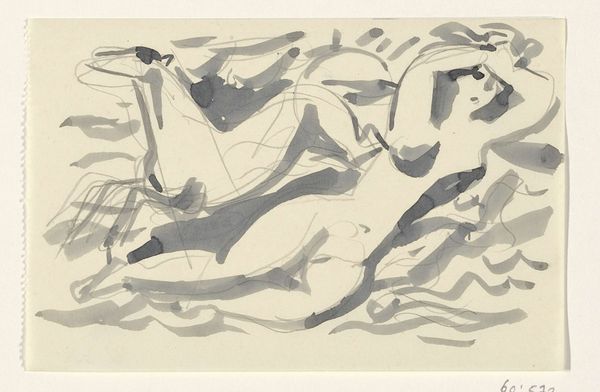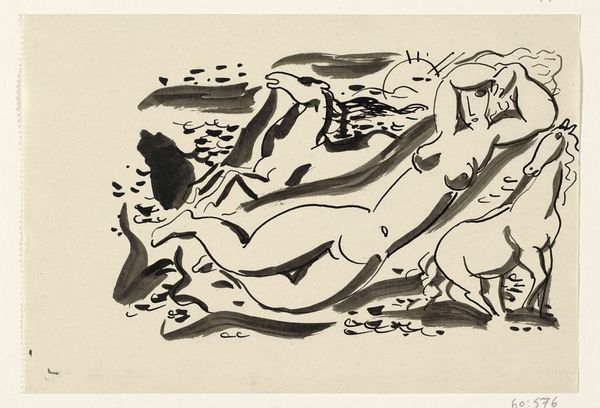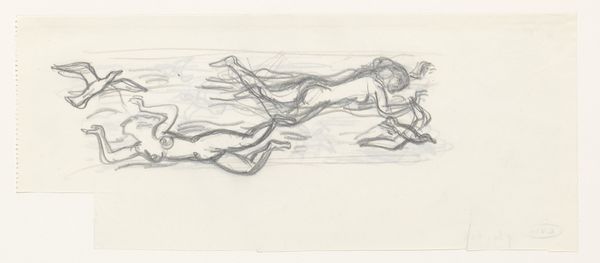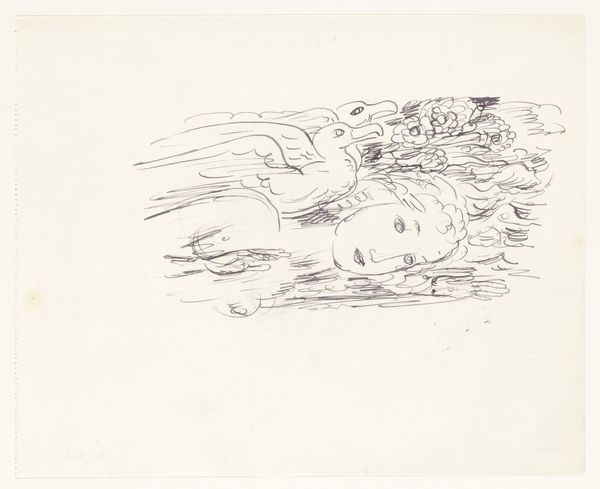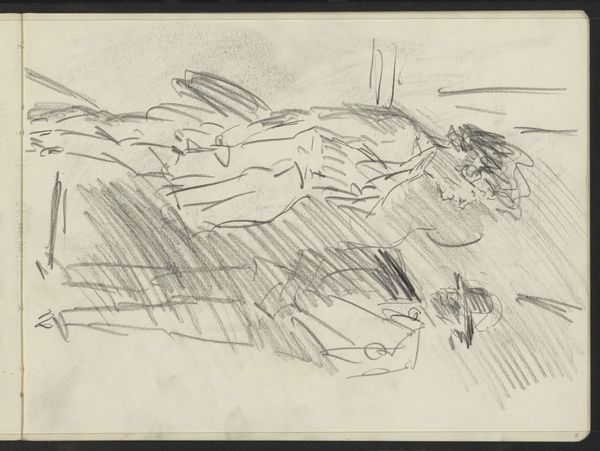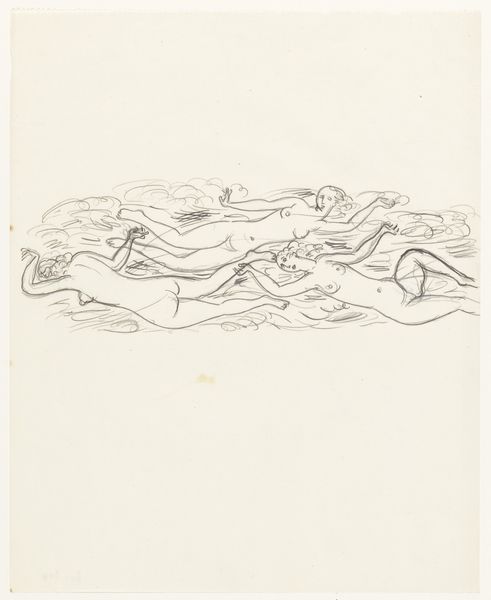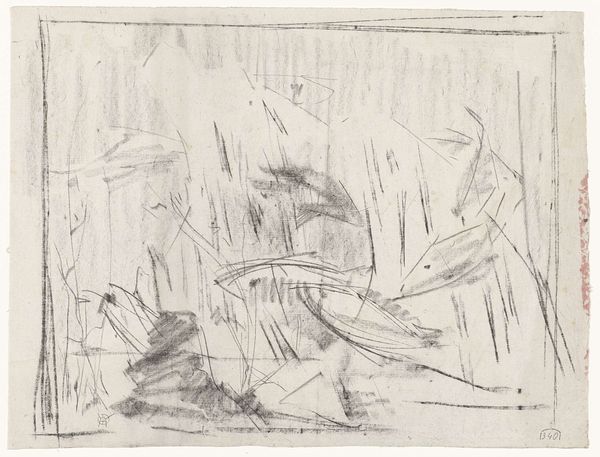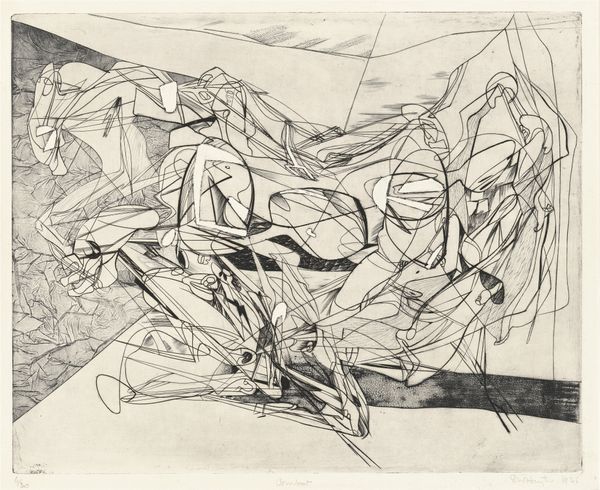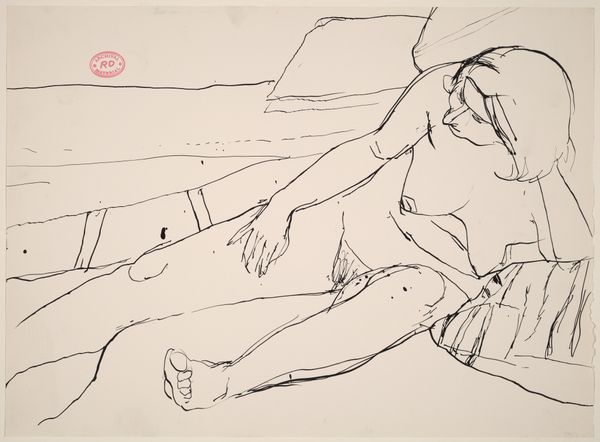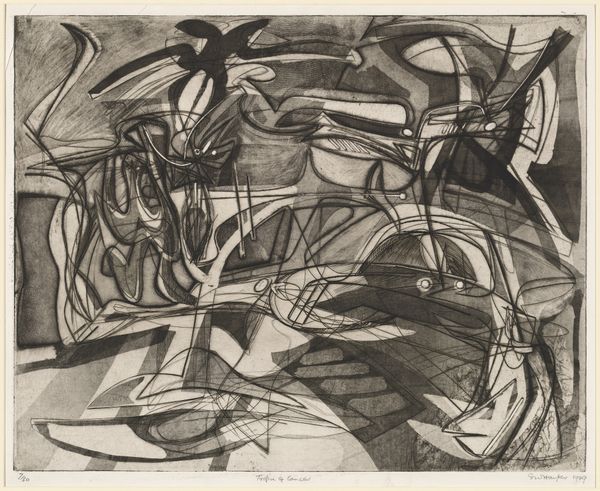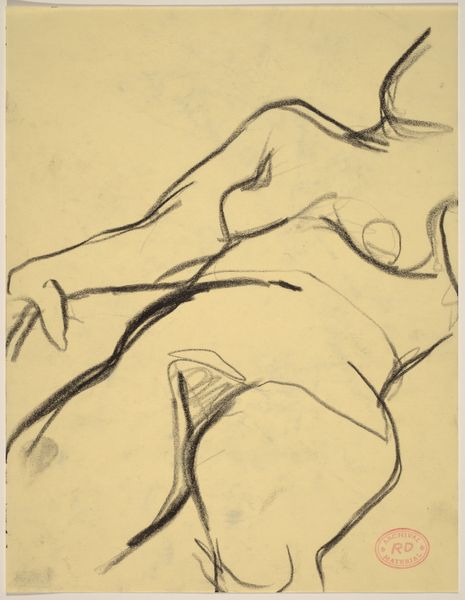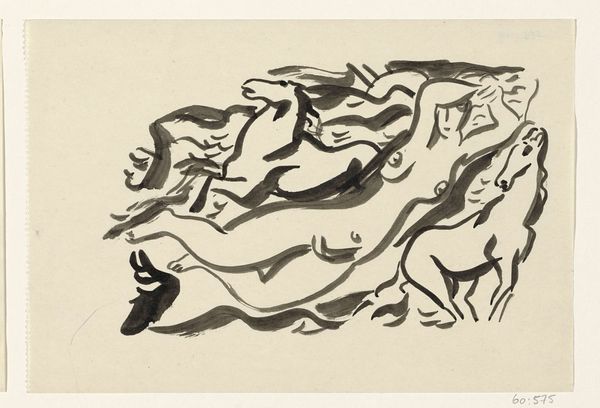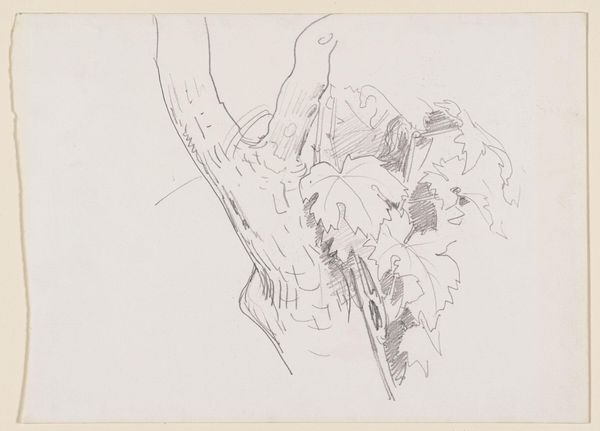
Dimensions: height 101 mm, width 155 mm
Copyright: Rijks Museum: Open Domain
Editor: This is "Naakte vrouw en paard in de zee" (Naked Woman and Horse in the Sea) by Leo Gestel, created sometime between 1891 and 1941. It's an ink drawing on paper, currently housed in the Rijksmuseum. It's so fluid! The lines suggest movement and almost seem unfinished. What stands out to you? Curator: What interests me immediately is the stark contrast achieved through such simple materials – ink on paper. The paper itself, its quality, its very production, speaks volumes. Was it mass-produced? Was it expensive? This impacts how we view the artist’s intent and the accessibility of artmaking itself. And what kind of ink did Gestel choose? Was it readily available or a specialized medium requiring significant financial investment? Editor: I never thought about the ink itself! So, the very act of creation using specific materials reflects something about society at that time? Curator: Precisely. Ink drawings can suggest a disposable quality – a sketch, a preliminary idea. Gestel elevates this material to a statement. Furthermore, consider the social context. Nudes were controversial. Using a relatively inexpensive medium like ink allows the artist freedom, a quicker path to visualise and produce potentially contentious subjects. This method perhaps challenges notions of fine art produced with costly materials. Editor: That's fascinating. So, the accessibility of the materials and method might have empowered Gestel to explore taboo subjects? Curator: Absolutely. The process itself democratises art making in some ways, while simultaneously grappling with high art, intimate expression, and the commodification of the body. How are we to receive this ‘everyday’ material, ‘everyday’ scene? Is the artist drawing on class boundaries here? What type of social dynamic is created through his production? Editor: This has totally changed how I see it! It's not just a nude drawing, it's a statement about access, process, and perhaps a critique of what constitutes 'high art.' Curator: Exactly. It reminds us to consider art's material foundations and the stories those foundations tell.
Comments
No comments
Be the first to comment and join the conversation on the ultimate creative platform.
